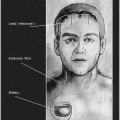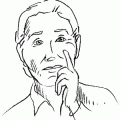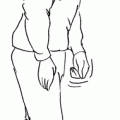and Kelvin L. Chou2
(1)
Parkinson’s Clinic of Eastern Toronto & Movement Disorders Centre, Toronto, ON, Canada
(2)
Michigan House, University of Michigan Medical School, Ann Arbor, MI, USA
Keywords
Rest tremorAction tremorPostural tremorKinetic tremorIsometric tremorTask-specific tremorDefinition of Tremor
Tremor is defined as an involuntary rhythmic oscillation of a body part, mediated by alternating contractions of reciprocally acting muscles [1]. Patients who complain of shaking or tremulousness may not always have tremor. Its rhythmicity often allows it to be differentiated from other involuntary movements such as myoclonus, clonus, chorea, dystonia, and tics [2]. Essential tremor is the most common tremor disorder, as well as the most common movement disorder (see Chap. 3 for how to diagnose essential tremor) [3].
Classification of Tremor
Tremor can be classified in a number of ways [4, 5]:
(A)
According to position of the body part affected by tremor
Tremor can be categorized as a resting tremor (if the tremor occurs while the affected body part is in complete repose) or an action tremor (if there is voluntary muscle activity in the affected body part) [4]. Action tremor can be further subdivided into postural tremor or kinetic tremor (see “Terminology of Tremor” below) [6].
(B)
According to the regions of body affected
Tremor may affect different body parts including limbs, head, tongue, jaw, vocal cords and palate. The parts of the body that are affected by tremor depend upon the underlying neurological condition. As an example, essential tremor commonly affects the hands, head and voice while Parkinson disease patients may have tremors in the arms, legs, and chin, but rarely the head [7, 8].
(C)
According to the frequency of tremor (Table 1.1)
Tremor syndrome | Frequency HZ |
|---|---|
Enhanced physiological tremor | 10–14 |
Essential tremor syndrome | 4–12 |
Primary orthostatic tremor | 14–18 |
Task specific tremor | 4–8 |
Holmes tremor | 3–5 |
Tremor of Parkinson disease | 3–7 |
Cerebellar tremor | 3–5 |
Palatal tremor | 2–6 |
Dystonic tremor | 5–7 |
Alcoholic tremor | 3–4 |
Toxic and drug induced tremor | 5–10 |
Psychogenic tremor | Variable |
(D)
According to the amplitude of tremor
1.
Mild amplitude (<2 cm)
2.
Moderate amplitude (2–4 cm)
3.
Severe amplitude (>4 cm)
(E)
Get Clinical Tree app for offline access

According to the etiology of tremor
1.
Essential tremor
2.
Enhanced physiological tremor
3.




Drug or toxin induced tremor.
Stay updated, free articles. Join our Telegram channel

Full access? Get Clinical Tree







